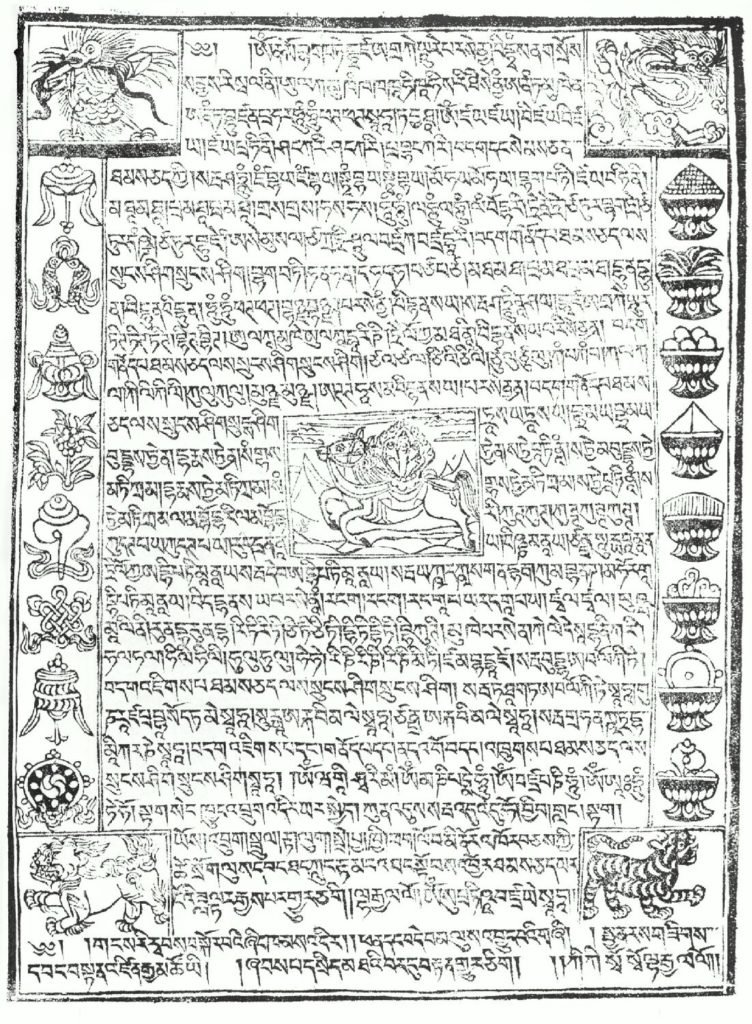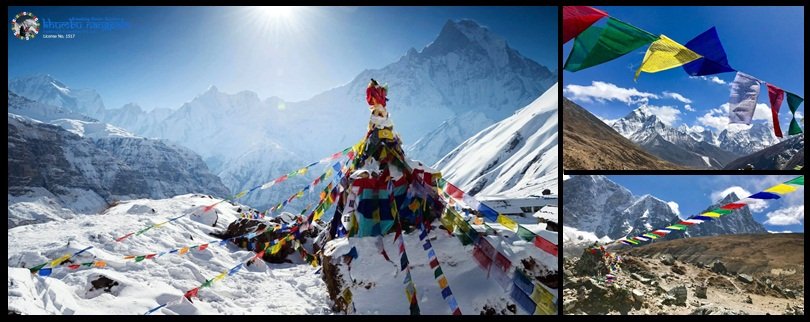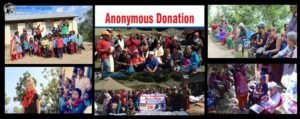Prayer flag
Posted in: 1st Apr, 2019 Post Category: Blog Blog of Nepal
A prayer flag is a colorful rectangular cloth, often found strung along trails and peaks high in the Himalayas. They are used to bless the surrounding countryside and for other purposes.
Prayer Flags in Tibet are called lungta (“wind horse”). Traditionally, the flags would always be recognizable by the drawings of a horse at the center of the composition surrounded by four other animals—a lion, tiger, bird, and dragon. Many modern prayer flags have, however, replaced the horse with other subjects, such as popular deities and teachers like Padmasambhava. One very popular example is the prayer flag depicting the quasi-mythical Tibetan hero King Gesar. The newer personalized flags generally retain the four surrounding animals in the four corners—sometimes by their written names instead of images.

Traditionally, prayer flags come in sets of five: one in each of five colors. The five colors are arranged from left to right in a specific order: blue, white, red, green, and yellow. The five colors represent the five elements and the Five Pure Lights.
- Water (or liquid) element (blue)
Water element represents the quality of Liquidity or relative motion. Any matter where relative motion of particles is in prominence are called water elements. Internal water elements include bile, phlegm, pus, blood, sweat, fat, tears, nasal mucus, urine, semen, etc. - Air (or wind) element (white)
Air element represents the quality of expansion or repulsive forces. Any matter where repulsive forces are in prominence are called air elements. Internal air elements includes air associated with the pulmonary system (for example, for breathing), the intestinal system (“winds in the belly and … bowels”), etc. - Fire element (red)
Fire element represents the quality of heat or energy. Any matter where energy is in prominence are called fire elements. Internal fire elements include those bodily mechanisms that produce physical warmth, ageing, digestion, etc. - Space element (green)
Internal space elements includes bodily orifices such as the ears, nostrils, mouth, anus, etc. - Earth element (Yellow)
Earth element represents the quality of solidity or attractive forces. Any matter where attractive forces are in prominence (solid bodies) are called earth elements. Internal earth elements include head hair, body hair, nails, teeth, skin, flesh, sinews, bone, organs, intestinal material, etc.
Traditionally, prayer flags are used to promote peace, compassion, strength, and wisdom. The flags do not carry prayers to gods, which is a common misconception; rather, the Tibetans believe the prayers and mantras will be blown by the wind to spread the good will and compassion into all pervading space. Therefore, prayer flags are thought to bring benefit to all.
By hanging flags in high places the Lung ta will carry the blessings depicted on the flags to all beings. As wind passes over the surface of the flags, which are sensitive to the slightest movement of the wind, the air is purified and sanctified by the mantras.
The prayers of a flag become a permanent part of the universe as the images fade from exposure to the elements. Just as life moves on and is replaced by new life, Tibetans renew their hopes for the world by continually mounting new flags alongside the old. This act symbolizes a welcoming of life’s changes and an acknowledgment that all beings are part of a greater ongoing cycle.
According to traditional belief, because the symbols and mantras on prayer flags are sacred, they should be treated with respect. They should not be placed on the ground or used on clothing. Old prayer flags should be burned.









